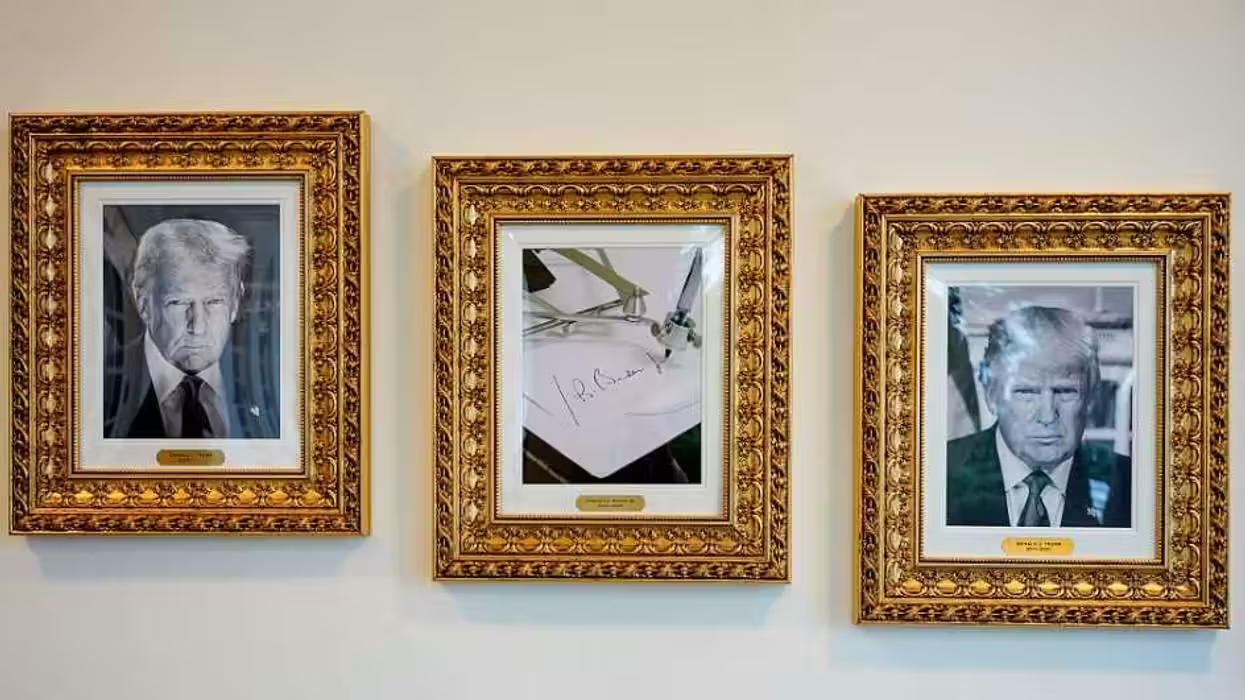
© 2025 Blaze Media LLC. All rights reserved.
Solyndra Allegedly Violated Loan Guarantee Terms in 2010 but Feds Restructured Anyway
September 28, 2011
". . . [we] were trying to protect taxpayers."
The Solyndra scandal -- unlike the company's nonexistent profits -- keeps growing.
There have already been several elements to this scandal that have been unearthed and discussed.
The execs pleading the fifth, the alleged connections between Solyndra and the White House (Solyndra's executives are apparently eager Obama donors), the ignoring of the White House budget analyst who wrote an email warning that the deal was "NOT ready for prime time," and so on.
And more facts are coming to light.
Solyndra had massive financial issues in 2010. So bad, in fact, that the company was in violation of the terms of its loan-guarantee agreement with the Department of Energy and technically "defaulted" on its $535 million loan-guarantee agreement, reports The Wall Street Journal (WSJ).
Back in 2009, the Obama administration proudly proclaimed that Secretary Chu was offering a loan guarantee to Solyndra by signing a "conditional commitment." A "conditional commitment" (i.e. the earmarking of funds that becomes an actual commitment only when specified conditions are fulfilled) that Solyndra was in no position to honor.
Energy.gov happily announced:
Just as homebuyers who have been approved for a loan are required to meet certain conditions before closing, the conditional commitment will require Solyndra to meet an equity commitment as well as other conditions prior to closing. Today's action signals the Department's intent to move forward on Solyndra's application for $535 million loan guarantee provided the company meets its obligations.
However, Solyndra was so short of cash in December 2010 that it was unable to meet the stipulations of its U.S. loan-guarantee agreement. The agreement required Solyndra to provide $5 million in equity to a subsidiary that was building its factory but "cash-flow problems" prevented those payments.
So how did the feds respond to these obvious warnings?
The government decided to restructure (reshuffle/reorganize) the loan agreement to help keep the company in business and Solyndra continued to draw money from its lenders.
The Wall Street Journal Reports:
The company's financial problems prompted the Energy Department early this year to allow it to reshuffle its debt. Under the arrangement, private investors agreed to provide a new $75 million loan and won the right to be paid ahead of the government if the company was liquidated.
Rep. Cliff Stearns of Florida, who is heading the Republican congressional investigation into the company, said, "Solyndra ran out of cash in December 2010, yet DOE continued to ignore the red flags and astonishingly doubled down on a bad bet and restructured the loan, further putting taxpayers at risk for what could now be a half billion dollars."
Administration officials have defended the initial loan guarantee and subsequent restructuring, saying they were trying to protect taxpayers, according to a recent FOX news report.
The loan was officially restructured in February 2011, guaranteeing the company enough money to see its way through the end of August.
"The company, which had drawn down $475 million of the U.S. loan as of Dec. 31, 2010, ended up borrowing $527 million before its bankruptcy," reports the Journal.
Jonathan Silver, executive director of the loan program, recently told lawmakers the government faced the difficult choice of either forcing Solyndra to close its doors or approving the restructuring to give it "a fighting chance at success and the government a higher expected recovery on its loan."
Doug Mataconis of Outside the Beltway sums it up nicely:
Now it’s worth noting that many of these moves are not at all unusual in high stakes commercial lending, although a lender who restructures a loan and subordinates debt typically gets something in return for it like a Personal Guaranty. Unusual or not, though, it’s just another one of those things that is going to lead to questions about this entire deal and, in a political context, it just doesn’t look good, especially given the political connections between Solyndra’s ownership and the Obama White House.In other news . . . Solyndra’s assets will be sold at auction next month. Anyone want to guess how many pennies on the dollar Uncle Sam is going to get out of this one?
The fact that they were unable to meet a $5 million requirement should have raised every red flag possible, as the WSJ points out in this video:
If this Solyndra spectacle is not already a headache for the Obama administration, it will be pretty soon.
Want to leave a tip?
We answer to you. Help keep our content free of advertisers and big tech censorship by leaving a tip today.
Want to join the conversation?
Already a subscriber?
more stories
Sign up for the Blaze newsletter
By signing up, you agree to our Privacy Policy and Terms of Use, and agree to receive content that may sometimes include advertisements. You may opt out at any time.
Related Content
© 2025 Blaze Media LLC. All rights reserved.
Get the stories that matter most delivered directly to your inbox.
By signing up, you agree to our Privacy Policy and Terms of Use, and agree to receive content that may sometimes include advertisements. You may opt out at any time.






